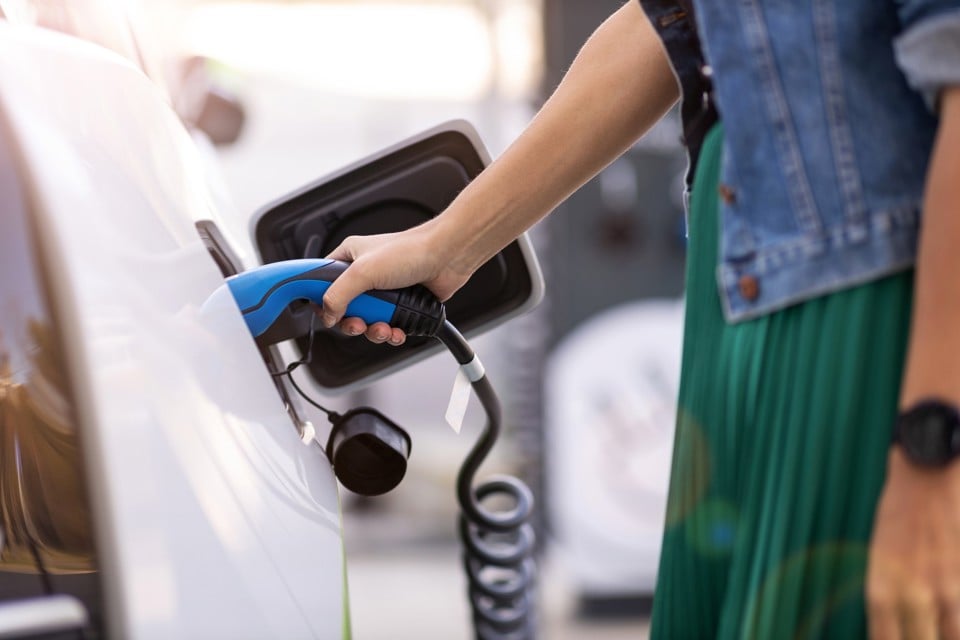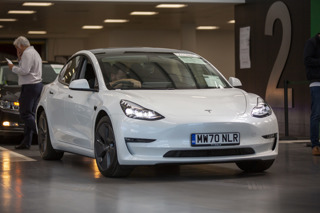After months of falling prices, the values of used electric vehicles (EVs) are beginning to stabilise, according to the latest analysis of auction data.
Aston Barclay reports that in Q2 prices fell by just 1.4% (£329) to £22,100 at an average age and mileage of 30 months and 22,128 miles.
Some used EV prices, it says, are also showing signs of being on par with their internal combustion engine (ICE) equivalent for the very first time.
Nick Thompson, Aston Barclay’s director of sales, said: “We have seen used EV prices stabilise in Q2. What is significant is that dealers are reporting that some used EVs and equivalent model ICE cars are reaching price parity which will mean a used EV should appear on more driver shortlists when replacing their next used car.”
The biggest loser in Q2, according to Aston Barclay, were hybrids that fell by 5.6% (£1,198) to £18,280 despite average age falling to 47 months and 45,786 miles.
With EV prices falling, interestingly Aston Barclay suggests that more used car buyers are moving straight to electric from petrol or diesel, rather than using a hybrid as a steppingstone which has reduced demand.
Cox Automotive is also reporting a stabilisation of used battery electric vehicle (BEV) values. Cox Automotive’s insight and strategy director, Philip Nothard, said: “As new BEV registrations continue to rise, driven primarily by fleet and leasing strategy, the used BEV market shows signs of stabilisation after the severe adjustments experienced in the first half of 2023.
“Consumer and retailer confidence in the purchase of used BEVs remains crucial to the success of the transition to an electrified market.”
The positive auction data for used EVs appears to correlate with analysis from Cap HPI released in the past few days.
It said that many BEV models have now stabilised or appear close to a plateauing, but warned a small number of used EVs remain weak and appear to still have some way to fall, with no common denominator or central theme governing how individual ranges are performing.
Dylan Setterfield, head of forecast strategy at Cap HPI, said: “Many EV models are now looking good value, with trade values for the majority of models, where a comparison is possible, actually now below ICE equivalents.”
Setterfield says that there is “potential” for some to increase from their current used value position, but he added: “We assume further deflation in future and have factored this into our forecasts.”
Used fleet vehicles in demand

Looking at the used vehicle market overall, Aston Barclay reports buyers were avoiding purchasing used cars that need significant refurbishment, based on rising repair times and ongoing delays with parts supplies, during Q2.
The fleet sector has benefitted most from this trend as most of the auction stock fall into the NAMA 1 and 2 grading band which is what buyers prefer.
Fleet prices fell by just £61 from Q1 to Q2 to £16,643 despite average age rising by one month to 42.2 months and average mileage rising by 2,421 miles to 37,395 miles.
Signs of a steady recovery
The used car market has shown signs of a steady recovery in the first half of 2023, according to analysis by Cox Automotive.
Data for the first six months of this year, captured by the automotive service provider’s Manheim Auction Services, Dealer Auction and NextGear Capital brands, points to a resilient marketplace buoyed by strong demand and improved year-on-year performance.
Consumer demand for used vehicles has continued to grow in line with Cox Automotive’s forecasts, despite new vehicle supplies slowly returning to near-normality.
The growth can be attributed in part to the increased supply of de-fleeted vehicles into the marketplace as the lease and rental sector has moved to replenish stock.
Cox Automotive experts believe wholesale activity is currently exhibiting the traits that will define the market going forward.
Increased mileage and age
Comparing the past six months to the same period in pre-pandemic 2019 shows that the average used vehicle entering the wholesale market today is older, carrying more miles, costs more, is selling faster and commanding a stronger margin.
Specifically, NextGear Capital data shows the average used vehicle is 23% older (7.5 years in H1/23 vs 6.1 years in H1/19 and carrying 13% more miles (68,671 vs 60,848). Manheim’s data paints a comparable picture.
According to Manheim’s data, the average wholesale sold price of a used vehicle was 33% higher than in H1/19, and 3% closer to Cap clean (96.4% vs 93.8%).
The average retail margin, as captured by Dealer Auction, has risen by 4% vs H1/22 (note - retail margin data was not captured in 2019).
Used cars are selling marginally faster than they did pre-pandemic according to NextGear Capital, at 60.3 days per vehicle in H1/23 vs 61.5 in the first six months of 2019.
Nothard said: “It’s greatly encouraging to see just how consistently the used market has continued to recover over the past six months.
“This is hugely positive and, what’s more, we are now ahead of pre-pandemic levels. The return of supply in the new market has naturally played an important role but it’s key to note that growth in new car registrations has not materially tempered the used market.
“The good news is that overall, the used car market is in a more predictable and reliable state than we’ve seen since the opening months of 2020, and is well positioned to meet consumer demand.”
However, Nothard believes that the average vehicle entering the wholesale market will continue to be older and more expensive than seen before the pandemic.
“Quite simply, more owners - be they fleet or private - are hanging onto their vehicles for longer, and the changing dynamic of the new car market combined with the economic environment means this will continue to be the case for the foreseeable future,” he added.





















Login to comment
Comments
No comments have been made yet.